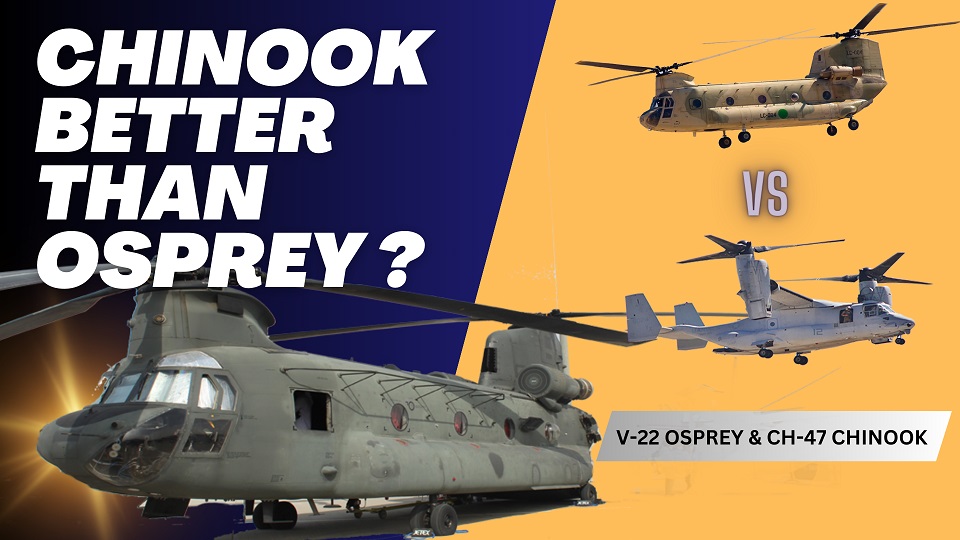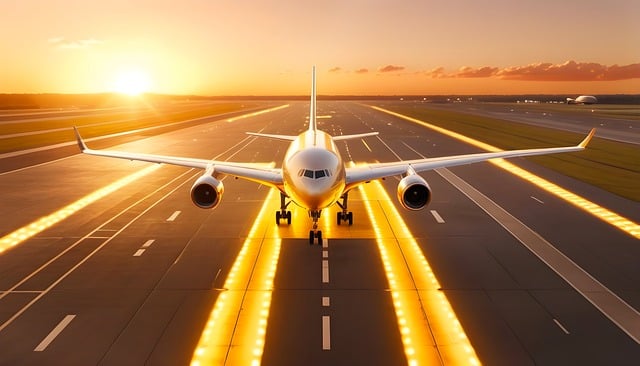Aviation
KLM’s new flight safety film inspired by Delft Blue craftsmanship.


KLM’s new flight safety film inspired by Delft Blue craftsmanship
Being a leader in aviation safety, it is our top priority to care about every detail of your flight safety. Clear on-board safety instructions are an important element of our flight safety procedure. Starting 1 November, we will introduce a striking new flight safety film on all of our intercontinental flights.
The film is inspired by the techniques used by the famous Delft Blue artisans. We cherish the craftsmanship of this Dutch art because every detail is painted with care. At KLM we conduct our safety process with the very same eye for detail.
Creating a film that grabs and holds the attention of every passenger is important to us, while putting a smile on your face. That’s why we created something special for you
At KLM we care about every detail of your flight safety
The authentic hand-crafted flight safety film emphasises the amount of detail that KLM puts into a subject as important as flight safety. All the tiles used in the film were drawn, animated and painted with extreme care. The cabin attendant who modelled for the artisans is al KLM cabin attendant. The voice-over in the film is done by the very same cabin attendant.
Thousand Delft Blue tiles
It took a lot of effort and different skills before the cabin attendant came alive in our new flight safety video. First the entire mandatory safety script was translated into a series of detailed, hand-drawn, Delft Blue illustrations.
All these illustrations were sent to a digital animator. He turned the hand-drawn illustrations of the complete safety process — including all her movements — into separate, animated frames. All the printed frames were sent back to the illustrators. They re-painted every single frame in the characteristic Delft Blue style. Finally, artisans painted over a thousand Delft Blue tiles. By photographing every tile using the stop-motion technique, a unique flight safety film was born.
Delftware and Delft Blue
Delft Blue is rooted in Dutch national heritage. The world-famous Delftware has a rich and long history which goes back to the early 1600s. The Dutch East India Company (VOC) ships brought back spices from the Far East and large quantities of porcelain China. The porcelain became very popular among affluent families such as the European Royals.
When civil wars in China made it too difficult to import, the Dutch potteries seized the opportunity to develop their own version of the blue-and-white porcelain. This was the start of the Dutch Delftware industry which is now known internationally as a typically Dutch product. Of the approximately thirty-two potteries founded in the seventeenth century, Royal Delft is the only Delftware factory left in Delft.
Inspired by the Royal Delft factory
For this movie, we drew inspiration from the Royal Delft factory. The Royal Dutch Delftware Manufactory, established in 1653, is the last remaining Delftware factory dating from the seventeenth century. Here, the world renowned Royal Delftware is still entirely hand painted according to centuries-old tradition. For more information: http://www.royaldelft.com

Delftware craftsmanship
KLM’s new flight safety film features more than 1,000 tiles, specially drawn, animated and painted with the utmost precision for this specific purpose. The entire script was first translated into handmade Delftware drawings, which were then painted onto the tiles. Stop-motion video animation was then used to film KLM’s flight safety instructions for passengers, tile by tile.


Delft Blue houses
Since 1952 every KLM World Business Class passenger has received a miniature Delftware house as a gift on each intercontinental flight she or he takes. Today KLM’s collection of Delftware houses spans ninety-six models. The Delft Blue miniature houses are copies of real houses. All have a historical significance and can be found all around the Netherlands..
Tasty Blue
Tasty Blue is a new catering concept which we plan to roll out this autumn. Inspired by Delftware, this concept aims to bring a touch of design to the dining experience on board. The new service is based on the concept of a set table. On board you will find trolleys, paper tray mats, tableware covers, paper boxes and cups bearing Delft Blue details or Delftware elements.

Dutch design
Just like the new flight safety film, KLM’s new Economy Class catering concept “Tasty Blue” was also inspired by Delftware design. The trolleys, placemats, cutlery sleeves, paper boxes and cups all feature Delftware details or elements. This ties in perfectly with KLM’s Delftware miniature houses, which have been presented to World Business Class passengers since the 1950s. The World Business Class tableware and new interior of the fleet were also created by Dutch designers. In addition, KLM has a long tradition of serving its World Business Class passengers meals created by leading Dutch chefs. In so doing, KLM reaffirms its pride in its Dutch roots and international allure.
The flight safety film and as well as the “making of” can be viewed at klm.com/flightsafety. The film and the Delftware tiles will also be on display at the Dutch Design week in Eindhoven from 17 to 25 October.
https://youtu.be/BTitrKvP64s
The safety instructions are updated in line with the latest rules and regulations.
Liked it ..?
Share with your friends and family

Aircraft comparison
Osprey is faster than Chinook helicopter ?

In this article, we’ll delve into two distinct military aircraft that have played essential roles in United Air Force defense. Both aircraft have unique characteristics in terms of usage and flying capabilities. One is capable of vertical takeoff and flies like an aircraft, while the other is a helicopter with two tandem rotors. Let’s explore each of these aircraft in detail.
The speed of helicopters can vary depending on several factors such as their design, engine power, payload, and mission requirements. Generally speaking, the Osprey (specifically referring to the V-22 Osprey) is faster than the Chinook helicopter.
The V-22 Osprey is a tiltrotor aircraft, meaning it can take off and land vertically like a helicopter but also tilt its rotors forward to fly like an airplane. This design allows the Osprey to achieve higher speeds compared to conventional helicopters. The cruising speed of the V-22 Osprey is around 241 knots (277 mph or 446 km/h).
On the other hand, the Chinook helicopter, such as the Boeing CH-47 Chinook, has a cruising speed typically around 170 knots (196 mph or 315 km/h). While the Chinook is a highly capable and versatile helicopter known for its heavy-lift capabilities and reliability, it generally operates at lower speeds compared to the Osprey.
The comparison between an Osprey and a Chinook helicopter involves contrasting two distinct aircraft with different designs, capabilities, and purposes:
MV-22 Osprey details:
The Osprey has garnered significant controversy since its inaugural flight, primarily stemming from issues associated with its tiltrotor design. These challenges have led to several incidents and crashes, resulting in the tragic loss of pilots and crew members and prompting multiple groundings of the aircraft.
However, efforts are underway to address these technical issues swiftly, with plans to rectify the problems and resume flights promptly. Despite these setbacks, the Osprey remains crucial in operational contexts, offering enhanced capabilities for transporting both cargo and crew members, underscoring its pivotal role in various missions.
Except for the United States and Japan, no other country has been granted authorization to utilize the Osprey aircraft. Its unique design and specialized nature, being built in the United States, likely necessitate governmental permission for export to other nations.
The Osprey stands out for its groundbreaking design and innovation, featuring the ability to transition from vertical to horizontal rotor positions while also generating thrust like a conventional aircraft.
- MV-22 Osprey:
- The MV-22 Osprey is a tiltrotor aircraft, meaning it can take off and land like a helicopter but fly like a fixed-wing aircraft once airborne.
- It’s primarily used for vertical takeoff and landing (VTOL), troop transport, cargo transport, and aerial refueling.
- The Osprey has a unique ability to combine the vertical lift capability of a helicopter with the speed and range of a turboprop aircraft.
- It can carry up to 24 troops or 20,000 pounds of internal cargo and has a top speed of around 315 miles per hour (507 km/h).
- The Osprey is utilized by the U.S. Marine Corps, U.S. Air Force Special Operations Command, and other military forces around the world.
Boeing CH-47 Chinook:
The Chinook helicopter stands as a testament to unparalleled engineering and innovation, making it one of the most distinctive aircraft ever constructed. Since its inception, no other nation has attempted to replicate its singular design, owing to the extraordinary precision and aerospace technology required for its construction. This helicopter, revered as an engineering marvel, has become a staple in major battlegrounds, renowned for its exceptional capacity to transport troops and cargo to any destination. Remarkably versatile, it operates seamlessly on both land and water surfaces, boasting an integrated floating system that enhances its capabilities even further.
Selected countries have been granted permission to utilize the Chinook helicopter, showcasing its global appeal and strategic importance. Furthermore, ongoing development efforts are underway to enhance the speed and carrying capacity of the next version of this iconic aircraft. Renowned for its exceptional safety record, the Chinook stands as one of the safest helicopters in operation today, with a remarkably low incidence of crashes. Its versatility is unmatched, making it an invaluable asset for operations in diverse terrains and environments.
- Boeing CH-47 Chinook:
- The Chinook is a tandem rotor helicopter, known for its distinctive twin-rotor design.
- It’s a heavy-lift helicopter primarily used for troop transportation, artillery emplacement, battlefield resupply, and various other missions.
- The Chinook has a rear loading ramp for cargo and troops, making it well-suited for quick loading and unloading.
- It can carry up to 55 troops or 24,000 pounds of cargo internally and has a top speed of around 170 miles per hour (274 km/h).
- The Chinook is widely used by the U.S. Army and various other military forces worldwide, including the UK, Canada, and others.
Comparison:
- Design: The Osprey is a tiltrotor aircraft, while the Chinook is a tandem-rotor helicopter.
- Speed and Range: The Osprey has a higher top speed and longer range compared to the Chinook due to its fixed-wing aircraft capabilities.
- Payload Capacity: The Chinook generally has a higher payload capacity for both troops and cargo compared to the Osprey.
- Versatility: While both aircraft are versatile in their own right, Osprey’s ability to take off and land vertically as well as fly at high speeds over long distances gives it a unique advantage in certain scenarios. However, the Chinook’s ability to carry larger payloads makes it better suited for heavy lift operations.
- Cost and Maintenance: Maintenance and operating costs may vary between the two aircraft, with tiltrotor technology typically being more complex than traditional helicopter designs.
Most Popular .
These are the Top 10 best US airlines of 2024

In an era where air travel plays an integral role in connecting people and places, the quality of airline service can significantly impact travelers’ experiences.
As we navigate the ever-changing landscape of aviation, insights into the performance and reliability of different carriers become invaluable. Enter WalletHub’s comprehensive analysis, offering a glimpse into the 10 best US airlines of 2024. Join us as we embark on a journey through the clouds, exploring the top performers.
Best airlines of 2024
- Alaska Airlines (68.07 out of 100): Anchoring the list is Alaska Airlines, celebrated for its consistency and customer satisfaction. With a score of 68.07, Alaska Airlines sets the standard for excellence in the skies.
- SkyWest Airlines (65.96): Following closely behind is SkyWest Airlines, recognized for its operational prowess and reliability. With a score of 65.96, SkyWest secures its position among the elite.
- Spirit Airlines (65.69): Surging into third place is Spirit Airlines, renowned for its affordability and expansive route network. Despite its low-cost model, Spirit Airlines earns acclaim with a score of 65.69.
- Delta Air Lines (61.56): A stalwart of the industry, Delta Air Lines maintains its reputation for superior service and efficiency. With a score of 61.56, Delta continues to soar above the competition.
- United Airlines (51.96): United Airlines occupies the middle ground, offering a balance of convenience and comfort to travelers. With a score of 51.96, United remains a dependable choice for domestic and international flights.
- JetBlue Airways (51.6): JetBlue Airways, known for its focus on customer experience and amenities, secures its place in the top 10 with a score of 51.6.
- Hawaiian Airlines (48.3): Transporting passengers, Hawaiian Airlines earns accolades for its hospitality and island-inspired service. With a score of 48.3, Hawaiian Airlines embodies the spirit of aloha.
- American Airlines (46.52): Despite facing challenges, American Airlines maintains its presence among the top performers with a score of 46.52, showcasing resilience in the competitive aviation landscape.
- Frontier Airlines (43.57): Frontier Airlines offers budget-conscious travelers a gateway to the skies with its affordable fares and diverse destinations. With a score of 43.57, Frontier Airlines secures its place in the top 10.
- Southwest Airlines (36.03): Rounding out the list is Southwest Airlines, renowned for its no-frills approach and extensive route network. With a score of 36.03, Southwest Airlines remains a popular choice for travelers seeking simplicity and value.
Aviation
South Korea Introduces Cutting-Edge MRO Center for F-35 and IAI

South Korea is set to make waves in the aerospace industry with the establishment of a cutting-edge Maintenance, Repair, and Overhaul (MRO) hub for F-35 fighter jets and IAI (Israel Aerospace Industries) aircraft.
Central to this initiative is the specialization in converting Boeing 777-ERSF, colloquially known as the “Big Twin,” from passenger to freighter configurations. Under the terms of the agreement, IAI will spearhead the conversion of six B777-300ER and B777-200LR aircraft annually, commencing in 2024. This strategic move is in response to the anticipated surge in demand for wide-body freighter aircraft capable of long-haul flights.
Furthermore, South Korea’s forward-looking vision extends beyond aircraft conversion, with plans to establish a Lockheed Martin F-35 maintenance, repair, and overhaul depot at Cheongju Air Base by 2027. This strategic move not only enhances the operational readiness of South Korea’s air force but also positions the nation as a regional hub for F-35 maintenance expertise.
In preparation for this expansion, thirty Republic of Korea Air Force (ROKAF) engineers and technicians are slated to undergo intensive maintenance training in the United States in 2025, a testament to South Korea’s commitment to fostering local expertise and talent.
IAI’s visionary approach to certification and collaboration underscores the potential for transformative change. With plans for the 777-300ERSF certification process set to unfold in Israel, followed by the rigorous scrutiny of regulatory agencies such as the US Federal Aviation Administration (FAA), the stage is set for the ‘Big Twin’ to soar to new heights of success.
In partnership with esteemed entities like STK and Incheon International Airport Corporation, this collaboration promises to unleash a wave of benefits, amplifying the resilience and competitiveness of the Korean aviation sector while catalyzing job creation and economic prosperity.






















